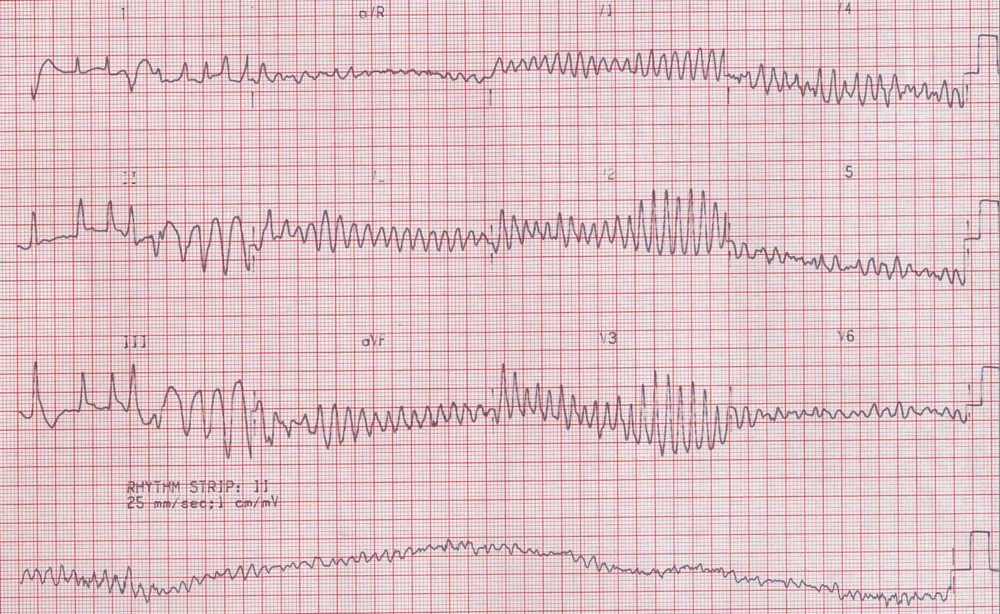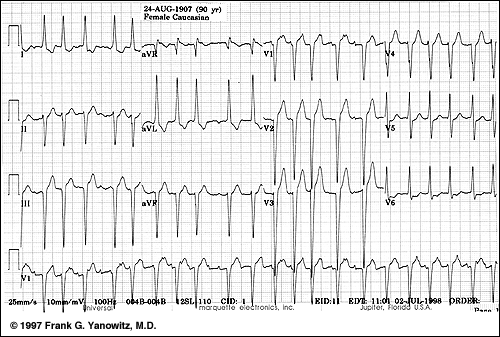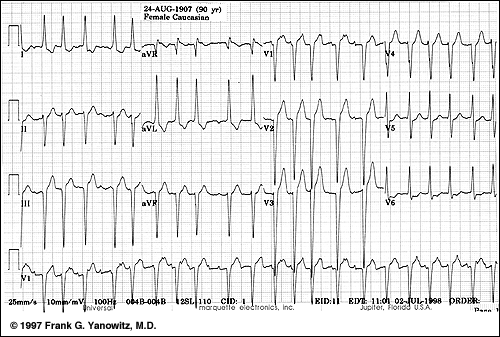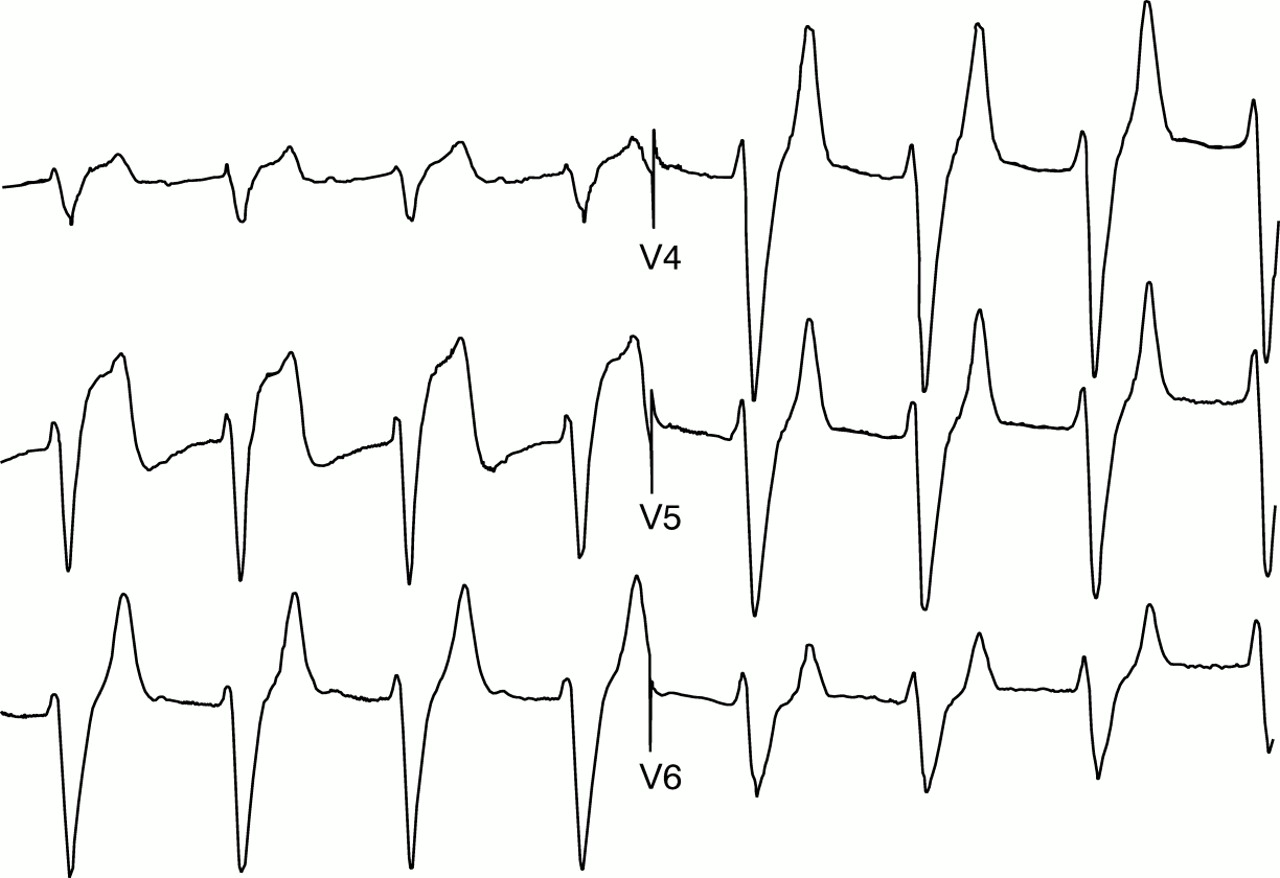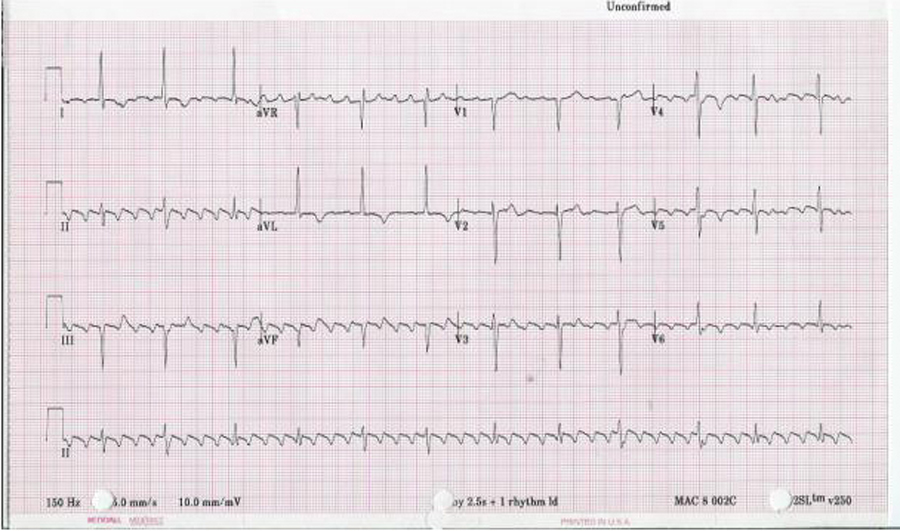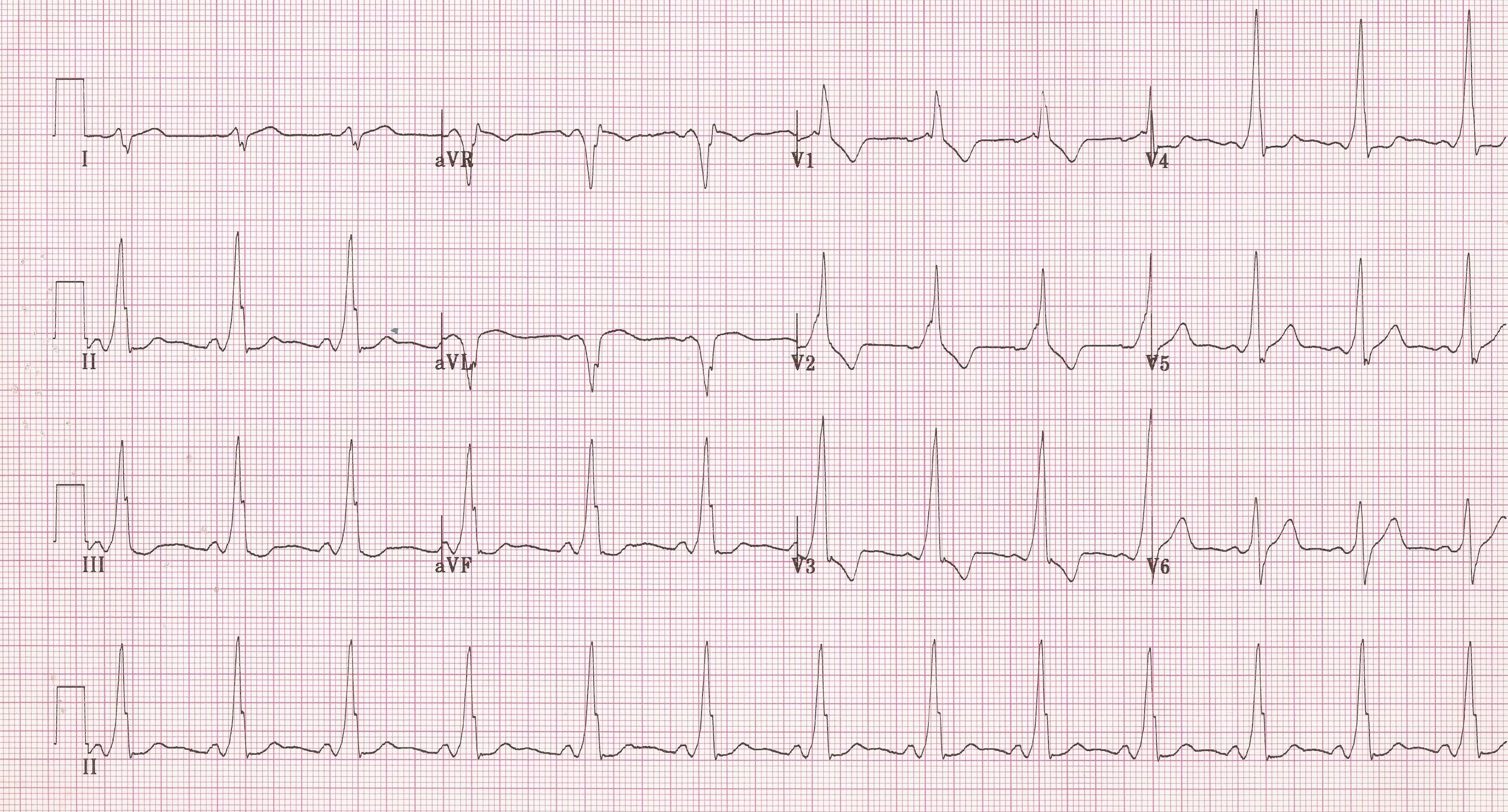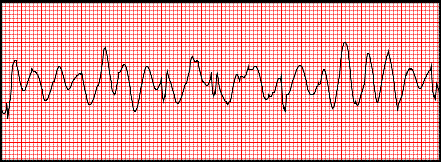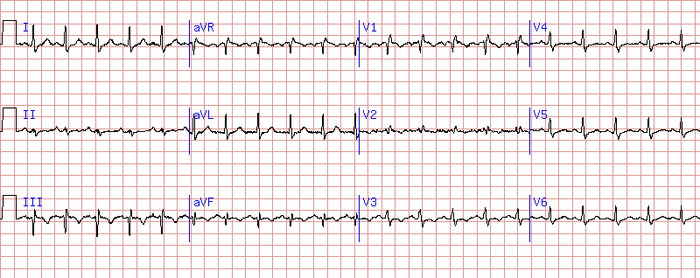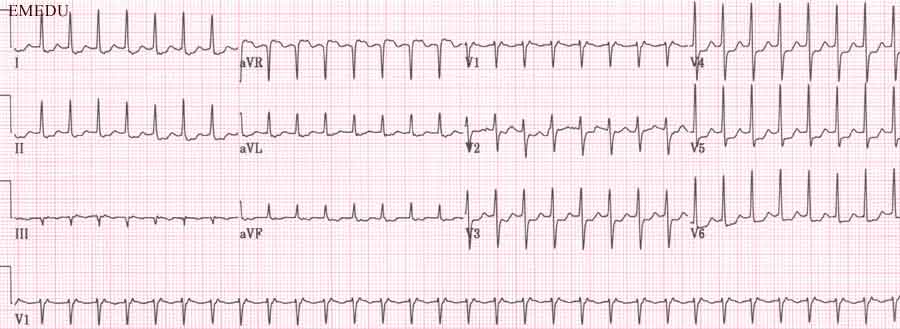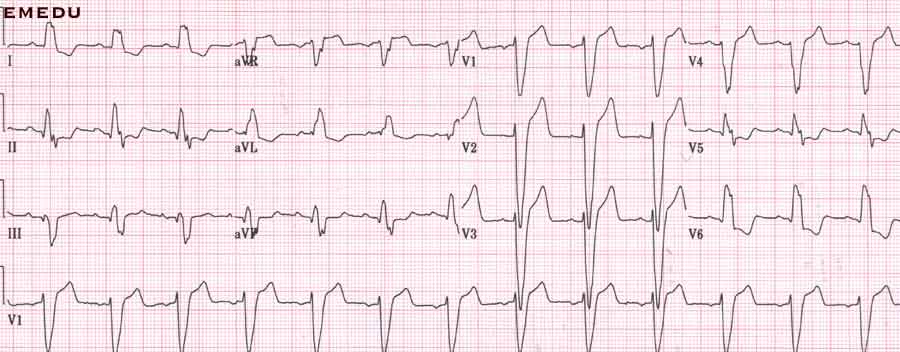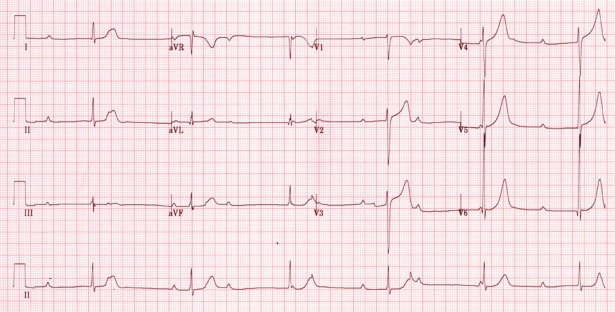The EKG Quiz - Medical Science Test
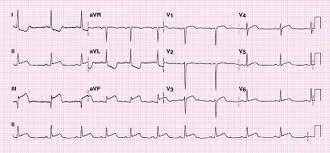
An electrocardiogram (ECG or EKG) records the electrical signal from your heart to check for different heart conditions. Electrodes are placed on your chest to record your heart's electrical signals, which cause your heart to beat.
Electrocardiography is the process of producing an electrocardiogram.
This is The EKG Quiz - Medical Science Test
- 1.
What is the most likely diagnosis in this patient?
Explanation
The most likely diagnosis in this patient is STEMI, which stands for ST Elevation MI, or MI, which stands for Myocardial Infarction. Another possible diagnosis is Inferior Myocardial Infarction, also known as Inferior MI. These terms all refer to a specific type of heart attack characterized by ST segment elevation on an electrocardiogram.Rate this question:
- 2.
What is the first line treatment for this rhythm below?
Explanation
Magnesium is the first line treatment for the given rhythm. Magnesium is commonly used to treat various cardiac arrhythmias, including torsades de pointes, a potentially life-threatening ventricular arrhythmia. It is administered intravenously and helps stabilize the electrical activity of the heart by blocking the influx of calcium ions and reducing automaticity. The abbreviations "Mag" and "Mg" are commonly used in medical practice to refer to magnesium.Rate this question:
- 3.
What is the rhythm?
Explanation
The correct answer is Multi-focal atrial tachycardia (MAT). Multi-focal atrial tachycardia is a type of abnormal heart rhythm characterized by rapid and irregular contractions of the atria. In this condition, the electrical signals in the atria originate from multiple sites instead of a single site, causing the heart to beat too fast. This results in an irregular rhythm. MAT is often seen in individuals with underlying lung disease or heart conditions.Rate this question:
- 4.
What is the most likely underlying diagnosis in the patient with this EKG?
Explanation
The most likely underlying diagnosis in the patient with this EKG is COPD (Chronic obstructive pulmonary disease). This is because COPD is a chronic lung disease that can cause various cardiovascular abnormalities, including changes in the EKG. Patients with COPD often have increased heart rate, right axis deviation, and signs of right ventricular strain on the EKG. Therefore, the presence of these EKG findings suggests that COPD is the most likely diagnosis in this patient.Rate this question:
- 5.
What is the single first treatment needed in this patient?
Explanation
The question is asking for the single first treatment needed in the patient. The answer options are Calcium, Calcium chloride, Calcium gluconate, and CaCl. All of these options refer to different forms of calcium. Calcium is an essential mineral that plays a vital role in various bodily functions, including muscle contraction, nerve function, and blood clotting. In medical emergencies such as hypocalcemia or cardiac arrest, administering calcium intravenously in the form of calcium chloride, calcium gluconate, or CaCl can help restore calcium levels and stabilize the patient. Therefore, any of these options can be considered the correct first treatment needed in this patient.Rate this question:
- 6.
What is the rhythm?
Explanation
The correct answer is Atrial flutter, A flutter, Flutter. The term "atrial flutter" refers to an abnormal heart rhythm in which the atria (the upper chambers of the heart) beat too quickly. It is characterized by a rapid and regular heartbeat. "A flutter" is a shorter term for atrial flutter, while "flutter" is a more general term that can refer to any rapid and regular heartbeat, not necessarily specific to the atria. Therefore, all three options are correct and describe the same rhythm.Rate this question:
- 7.
What is the finding in this EKG?
Explanation
The finding in this EKG is consistent with Wolff-Parkinson-White (WPW) syndrome. This is characterized by the presence of an accessory pathway in the heart, known as the bundle of Kent, which allows for abnormal electrical conduction. This results in a shortened PR interval, a widened QRS complex, and characteristic delta waves on the EKG. The condition is named after the physicians who first described it, Louis Wolff, Sir John Parkinson, and Paul Dudley White.Rate this question:
- 8.
What anti-arrhythmic is most appropriate in this patient as part of ACLS algorithm after epinephrine?
- A.
True
- B.
False
Correct Answer
A. TrueExplanation
The explanation for the given correct answer is not available.Rate this question:
-
- 9.
What is the most likely diagnosis?
Correct Answer
PE
pulmonary embolism
pulmonary embolusExplanation
The most likely diagnosis for this question is pulmonary embolism (PE). PE refers to a blockage in one of the pulmonary arteries in the lungs, usually caused by a blood clot that has traveled from another part of the body, such as the legs. The terms "pulmonary embolism" and "pulmonary embolus" both refer to the same condition, which involves a sudden interruption of blood flow to the lungs.Rate this question:
- 10.
What is this rhythm?
Correct Answer
svt
supraventricular tachycardia
flutter
atrial flutter
aflutterExplanation
This rhythm is known as supraventricular tachycardia (SVT), which can also be referred to as flutter or atrial flutter. Aflutter is another term used to describe this rhythm.Rate this question:
- 11.
This is a left bundle branch block.
- A.
True
- B.
False
Correct Answer
A. TrueExplanation
This statement is true because a left bundle branch block (LBBB) is a conduction abnormality in the heart's electrical system. It occurs when there is a delay or blockage in the electrical signals that travel through the left bundle branch, which is responsible for conducting signals to the left side of the heart. This can be seen on an electrocardiogram (ECG) as a characteristic pattern of widened QRS complex and specific changes in the ST-T wave. Therefore, the given statement is correct.Rate this question:
-
- 12.
What type of MI is this patient having?
- A.
Anterior
- B.
Inferior
- C.
Lateral
Correct Answer
B. InferiorExplanation
This patient is having an inferior myocardial infarction (MI). An inferior MI occurs when there is a blockage or reduced blood flow in the inferior wall of the heart, which is supplied by the right coronary artery. This can lead to symptoms such as chest pain or discomfort, shortness of breath, and possibly changes in the electrocardiogram (ECG) indicating damage to the inferior region of the heart. Treatment for an inferior MI may involve medications to improve blood flow and reduce clotting, as well as interventions such as angioplasty or stenting to restore blood flow to the affected area.Rate this question:
-
- 13.
What type of heart block is demonstrated below?
- A.
First
- B.
Second
- C.
Complete
- D.
This patient does not have heart block
Correct Answer
C. CompleteExplanation
The given answer is "Complete." This suggests that the type of heart block demonstrated in the scenario is a complete heart block. A complete heart block occurs when there is a complete interruption or blockage of electrical signals between the atria and ventricles of the heart. This results in a lack of coordination between the two chambers, leading to a slow and irregular heartbeat.Rate this question:
-
Quiz Review Timeline +
Our quizzes are rigorously reviewed, monitored and continuously updated by our expert board to maintain accuracy, relevance, and timeliness.
-
Current Version
-
Mar 21, 2023Quiz Edited by
ProProfs Editorial Team -
Feb 01, 2011Quiz Created by
Cpfennig
 Back to top
Back to top



